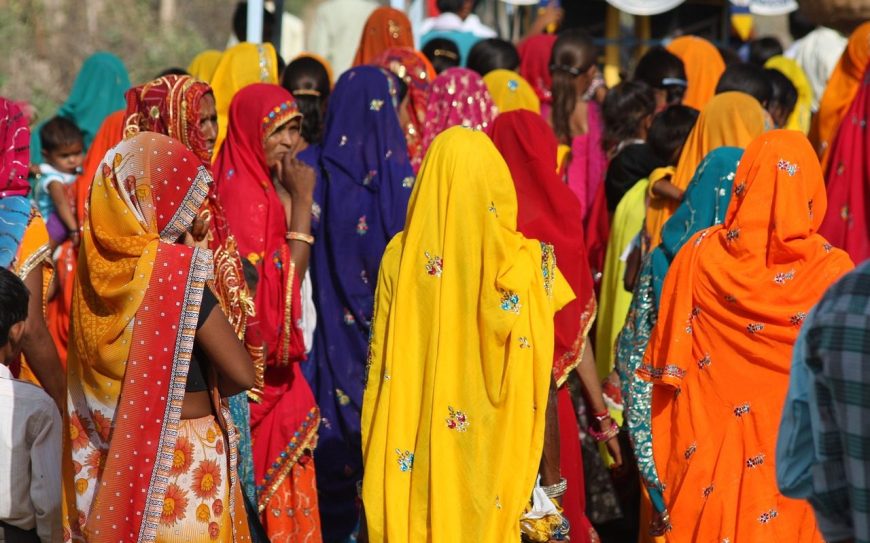Women’s Empowerment, Region of Residence, and Contraception among Women in India
- Megha Rana & Ryan Talbert
(Authors are listed alphabetically and authorship is equal) - Population Review
- Volume 63, Number 1, 2024
Despite actions taken by the Indian government to improve national, regional, and village-level sexual and reproductive health, 49 million women still have unmet contraceptive needs. Yet, when granted access, women disproportionately elect for irreversible methods such that India has the highest female sterilization rate in the world. Building on these insights, the present study examines associations between women’s empowerment (e.g., cooking, shopping, and family-planning autonomy), region (e.g., Hills, North, and East), and use of contraception (i.e., any and type). Data for this study comes from ever-married, reproductive aged women in the 2005 and 2012 waves of the India Human Development Survey (n=38,634). Results from multilevel logistic models showed that higher levels of women’s empowerment are associated with greater probability of using contraception, and after disaggregation, relying on female sterilization. Furthermore, region of residence modifies associations such that women residing in the North Central and North are typically less likely to utilize contraception. Across empowerment levels, residents of the West and South consistently have higher levels of contraceptive use. This study highlights the importance of women’s empowerment for contraception as well as regional differences in reproductive healthcare access, views of contraception, and long-term impacts of fertility planning programs.
Population Review
Volume 63, Number 1, 2024
Type: Article, pp. 24-54
Women’s Empowerment, Region of Residence, and Contraception among Women in India
Authors: Megha Rana & Ryan Talbert *
* Authors are listed alphabetically and authorship is equal.
Authors affiliations: Ryan D. Talbert is an Assistant Professor of Sociology; faculty affiliate of the Africana Studies Institute and the Institute for Collaboration on Health, Intervention, and Policy at the University of Connecticut; and leads the Health Equity Lab. Megha Rana is currently a Pre-PA student majoring in Molecular and Cell Biology and minoring in Sociology at the University of Connecticut. Her work includes examination of the role of region and women’s empowerment for contraception use among Indian women.
Corresponding author/address: Ryan Talbert ryan.talbert@uconn.edu
Abstract
Despite actions taken by the Indian government to improve national, regional, and village-level sexual and reproductive health, 49 million women still have unmet contraceptive needs. Yet, when granted access, women disproportionately elect for irreversible methods such that India has the highest female sterilization rate in the world. Building on these insights, the present study examines associations between women’s empowerment (e.g., cooking, shopping, and family-planning autonomy), region (e.g., Hills, North, and East), and use of contraception (i.e., any and type). Data for this study comes from ever-married, reproductive aged women in the 2005 and 2012 waves of the India Human Development Survey (n=38,634). Results from multilevel logistic models showed that higher levels of women’s empowerment are associated with greater probability of using contraception, and after disaggregation, relying on female sterilization. Furthermore, region of residence modifies associations such that women residing in the North Central and North are typically less likely to utilize contraception. Across empowerment levels, residents of the West and South consistently have higher levels of contraceptive use. This study highlights the importance of women’s empowerment for contraception as well as regional differences in reproductive healthcare access, views of contraception, and long-term impacts of fertility planning programs.
Keywords
India, contraception, women’s empowerment
© 2024 Sociological Demography Press
MLA
Rana, Megha and Ryan Talbert. “Women’s Empowerment, Region of Residence, and Contraception among Women in India.” Population Review, vol. 63 no. 1, 2024, p. 24-54. Project MUSE, https://doi.org/10.1353/prv.2024.a917544.
APA
Rana, M. & Talbert, R. (2024). Women’s Empowerment, Region of Residence, and Contraception among Women in India. Population Review 63(1), 24-54. https://doi.org/10.1353/prv.2024.a917544.
Chicago
Rana, Megha and Ryan Talbert. “Women’s Empowerment, Region of Residence, and Contraception among Women in India.” Population Review 63, no. 1 (2024): 24-54. https://doi.org/10.1353/prv.2024.a917544.
Endnote
TY – JOUR T1 – Women’s Empowerment, Region of Residence, and Contraception among Women in India A1 – Rana, Megha A1 – Talbert, Ryan JF – Population Review VL – 63 IS – 1 SP – 24 EP – 54 PY – 2024 PB – Sociological Demography Press SN – 1549-0955 UR – https://muse.jhu.edu/pub/251/article/917544 N1 – Volume 63, Number 1, 2024 ER –
Always review your references for accuracy and make any necessary corrections before using. Pay special attention to personal names, capitalization, and dates. Consult your library for more information on citing sources.




